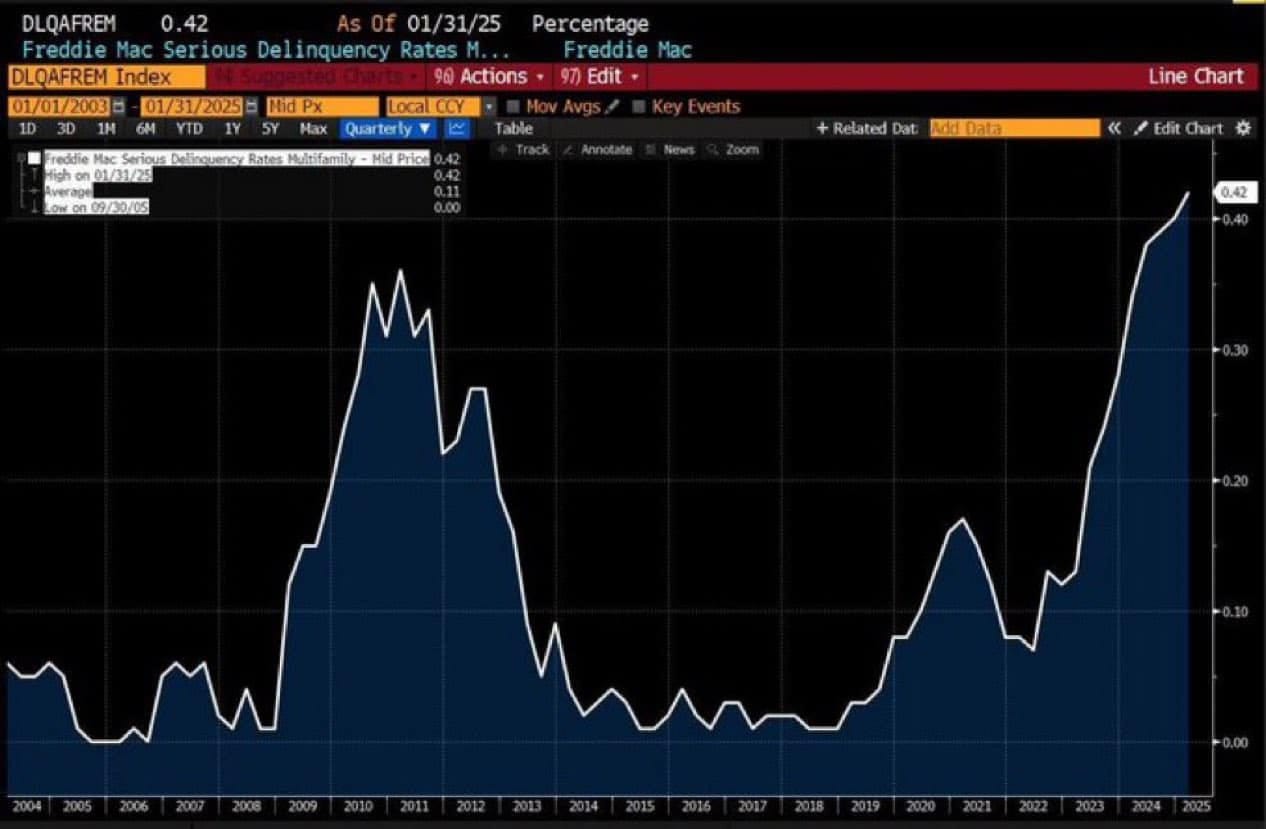Delinquency Data Misinterpreted: Why Homeowners Aren’t in Trouble

Over the weekend, a wave of social media speculation stirred panic around homeowner delinquency rates — but much of it is based on a misunderstanding.
The image that sparked this debate referenced Freddie Mac’s Serious Delinquency Rates, but crucially, these apply to multifamily mortgages — loans tied to commercial properties with five or more units, such as apartment buildings. Not single-family homeowners.
"You always have to examine the data closely before concluding anything on the internet."

Multifamily ≠ Homeowners
It’s essential to distinguish between multifamily loans and owner-occupied single-family mortgages, especially those with a 30-year fixed rate. The current multifamily delinquency rate is under 1%, but notably above levels seen during the 2008 recession. Still, this doesn't equate to homeowner distress.
What the Actual Homeowner Data Tells Us
To understand homeowner delinquency trends, we turn to the ICE First Look report (March 21), which clarifies that:
- The national delinquency rate rose slightly in February, up 5 basis points to 3.53%.
- This rate is still 32 basis points below where it stood before the pandemic began.
- Interestingly, FHA mortgages, which comprise less than 15% of all active loans, accounted for 90% of the 131,000 year-over-year delinquency increase.
- In Los Angeles, 4,100 homeowners are now behind on payments, largely due to recent wildfires — a sharp rise from 700 in January.
What’s Not Happening
- There is no widespread credit crisis among homeowners.
- Severe derogatory credit data is still below pre-COVID-19 benchmarks.
- Foreclosure and bankruptcy rates also haven’t returned to their pre-pandemic levels.
Why This Matters
It’s easy to fall for alarmist takes on social media — especially when charts are taken out of context. But before concluding that the housing market is spiraling, one must read the labels and understand the source of the data.
“I prefer not to dwell on this misunderstanding, but I want to highlight the importance of reading.”



